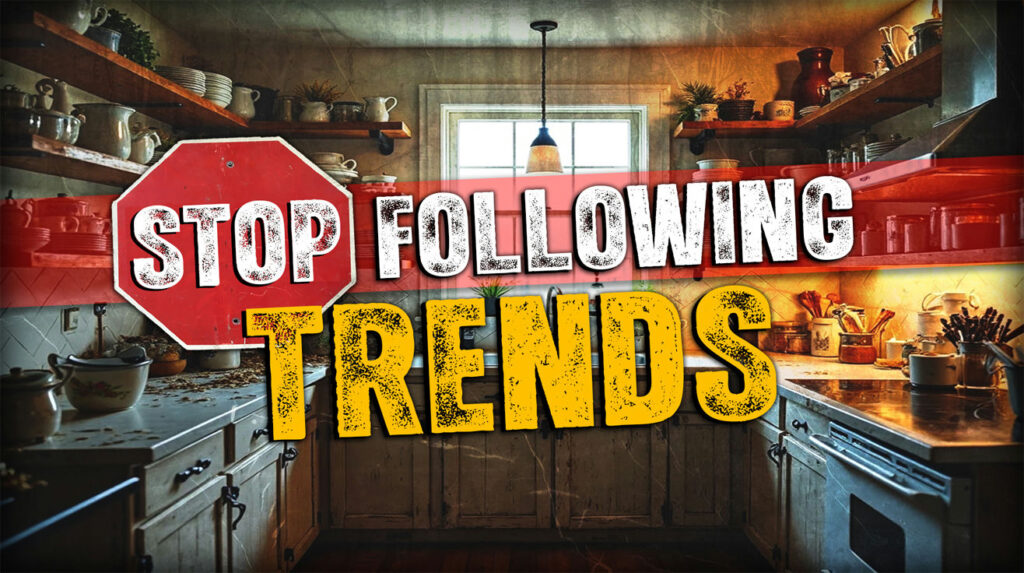
Your kitchen probably showcases at least three design choices that seemed brilliant five years ago but now scream “flip house special.” Design trends cycle faster than smartphone releases, leaving homeowners stuck with expensive mistakes that tank their home’s value. Some kitchen elements age like fine wine—others turn into vinegar the moment Pinterest moves on. Smart homeowners spot the difference before committing thousands to renovations that’ll date faster than milk left on the counter.
12. Matte Black Hardware Overload
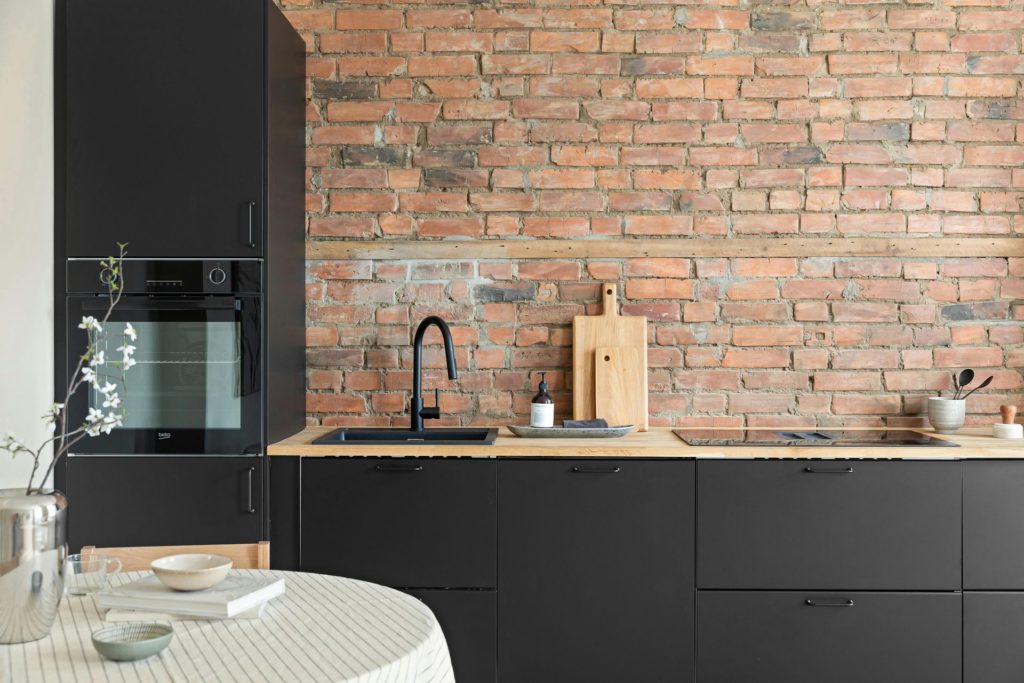
Matte black cabinet pulls dominated every kitchen renovation show until builders started slapping them on everything from starter homes to luxury builds. The oversaturation killed the premium vibe faster than a knockoff designer bag flooding Instagram feeds. When Home Depot stocks fifty variations of your “unique” hardware choice, it’s time to pivot.
Brass and aged bronze fixtures reclaim that sophisticated edge without looking like every other kitchen on the block. These warmer metals complement both light and dark cabinetry while aging gracefully instead of showing every fingerprint. Your hardware should enhance the space, not announce which year you renovated.
11. Over-the-Range Microwaves
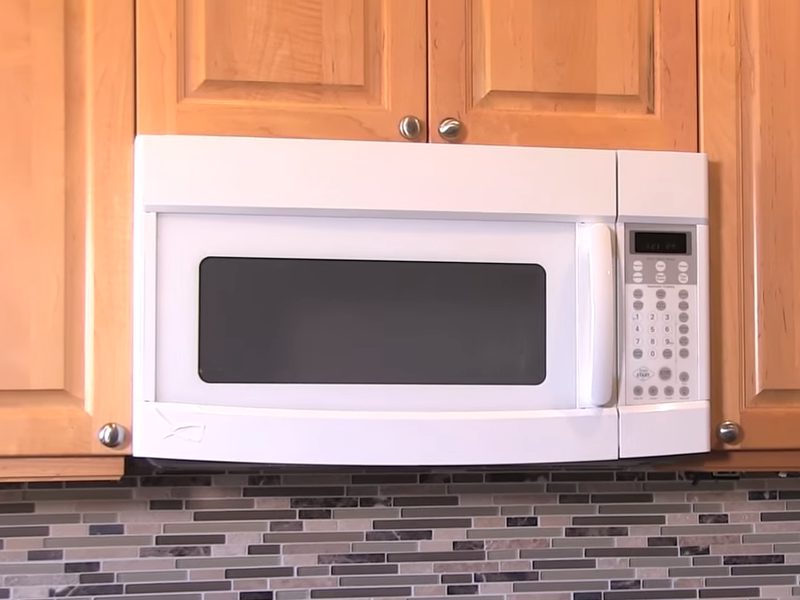
Nothing says “builder grade” quite like a microwave perched above your cooktop like an oversized growth. These units block sightlines, provide inadequate ventilation, and make your kitchen feel cramped while forcing you to reach over hot surfaces for leftovers. The ergonomics alone should disqualify this placement from any serious kitchen design.
Microwave drawers slide seamlessly into islands or lower cabinets, freeing up visual space while improving functionality. Cabinet-integrated units disappear entirely when not in use, maintaining clean lines throughout your space. Even a simple countertop model tucked into an appliance garage beats the awkward over-range placement that screams budget compromise.
10. Oversized Statement Pendants
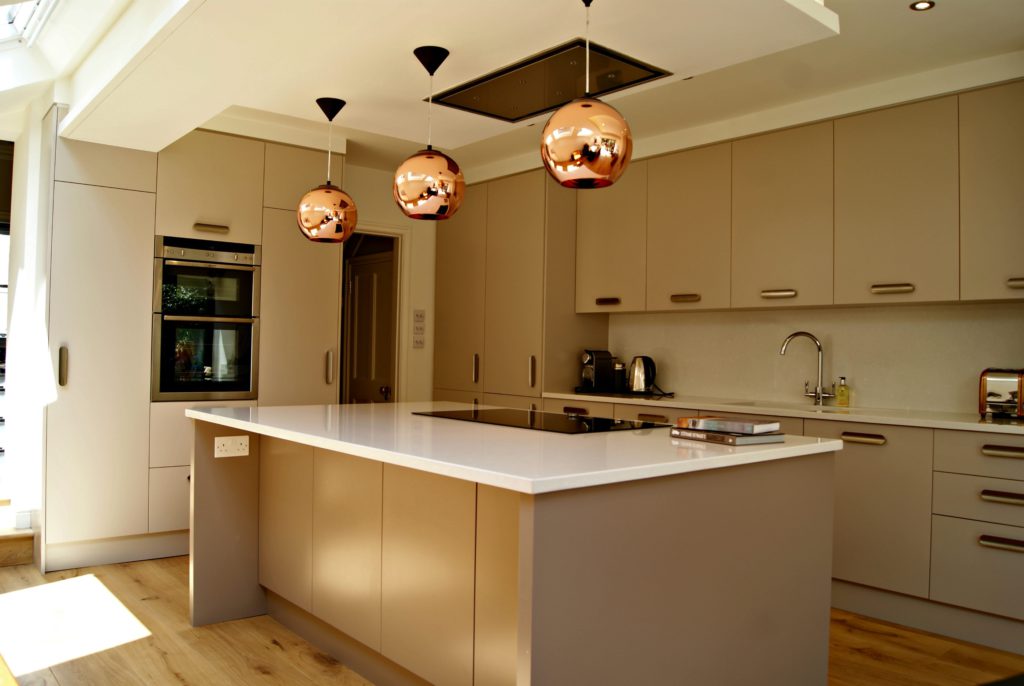
Those massive pendant lights looked dramatic in the showroom but feel like chandeliers in a phone booth once installed. Standard eight-foot ceilings can’t handle fixtures that belong in cathedral spaces, creating proportion disasters that overwhelm rather than illuminate. Your lighting should serve the room, not dominate it like a low-hanging storm cloud.
Multiple smaller fixtures create better task lighting than one massive statement piece while maintaining proper scale. Glass or natural materials provide ambient lighting without overwhelming the space or blocking conversation across kitchen islands. Functional illumination trumps dramatic gestures every time.
9. Fake Marble Everything
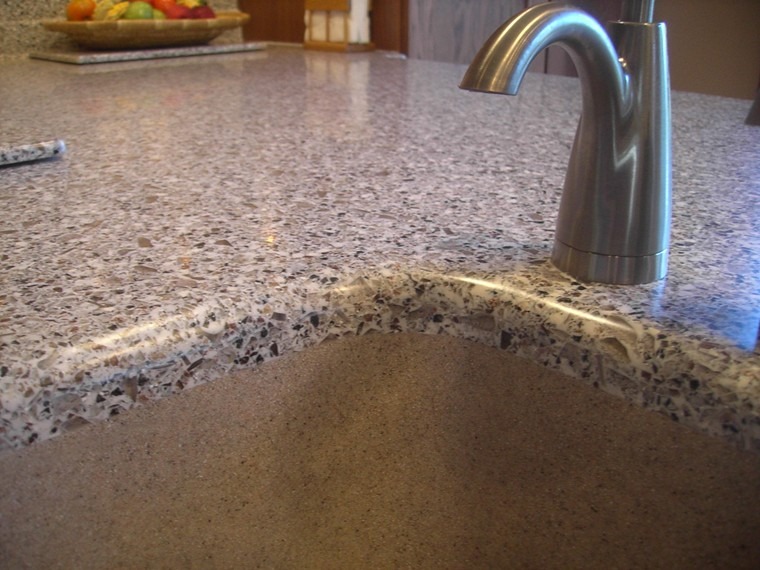
Peel-and-stick marble backsplashes fool nobody with functioning eyeballs, especially when patterns repeat every twelve inches in obvious artificial grids. These vinyl imitations scream “rental property upgrade” louder than a smoke detector with dead batteries. Even higher-end faux marble countertops display telltale uniformity that natural stone never possesses.
Quality quartz slabs offer durability without the maintenance headaches of real marble while avoiding the fake factor entirely. High-end ceramic tiles with varied patterns convincingly mimic natural stone when installed properly by skilled professionals. Terrazzo brings playful sophistication while lasting decades, proving authentic materials always outperform convincing fakes in both appearance and resale value.
8. Busy Geometric Backsplashes
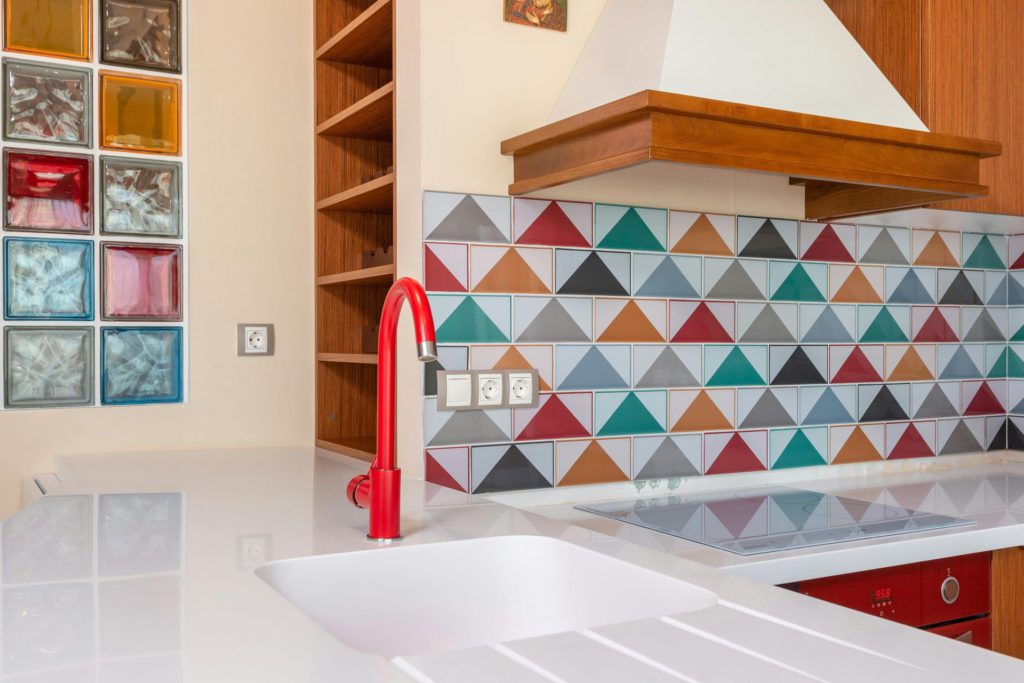
Those intricate Moroccan tile patterns that dominated Pinterest boards now feel as dated as dial-up internet. Tiny geometric tiles create visual chaos that competes with every other element in your kitchen instead of supporting the overall design. Your backsplash should complement the space, not assault it with patterns that induce sensory overload.
Clean subway tiles with slight imperfections add subtle texture without overwhelming the design or requiring constant grout maintenance. Extending countertop material up the wall creates seamless sophistication that never goes out of style. Simple patterns in neutral tones provide visual interest while maintaining long-term appeal that survives trend cycles.
7. Built-in Kitchen Desks
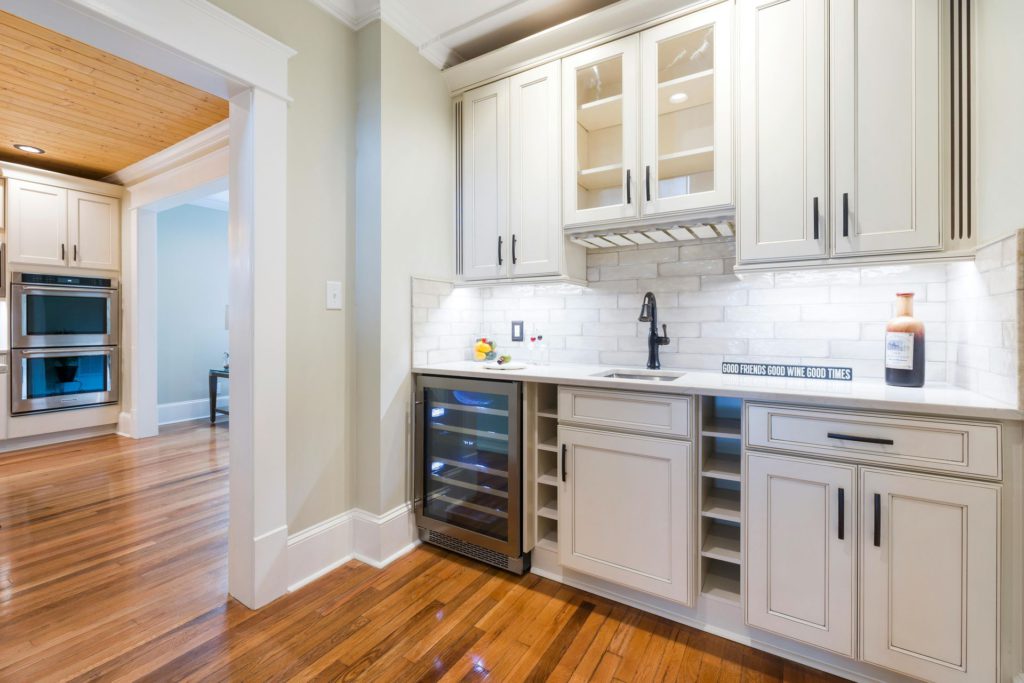
Remember when every kitchen needed a dedicated “command center” with built-in desk space? These areas quickly devolved into junk mail collection zones and homework dumping grounds rather than functional work spaces. Modern families need storage solutions, not more surfaces to clutter with random paperwork and expired coupons that nobody ever sorts.
Convert that dead desk space into a coffee station with dedicated storage for mugs, beans, and equipment that actually gets used daily. Wine refrigerators fit perfectly in former desk nooks while adding entertaining functionality that guests appreciate. Additional cabinet storage always beats a built-in surface that nobody actually uses for its intended purpose.
6. Orange Oak Cabinets
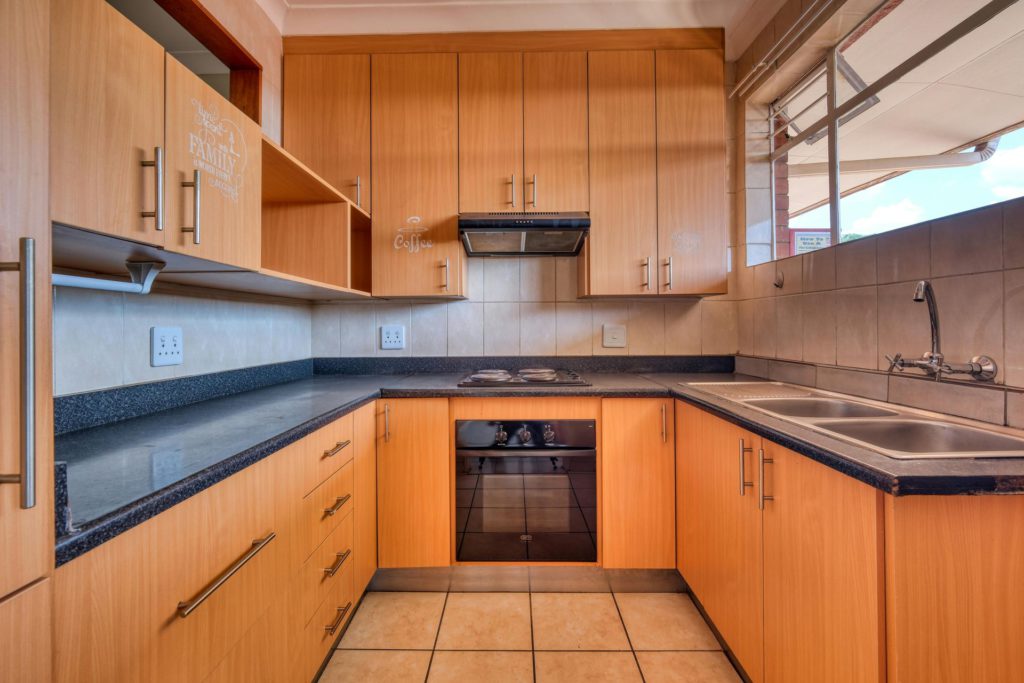
Golden oak cabinets with prominent wood grain transport kitchens straight back to 1987 faster than a DeLorean. These honey-toned surfaces reflect yellow light that makes everything look jaundiced while the heavy, dated appearance shrinks visual space. The overwhelming wood grain pattern creates visual noise that competes with every other design element.
White oak and maple provide cleaner grain patterns with contemporary appeal that won’t date your kitchen. Light wood tones open up spaces while offering natural warmth without the dated golden cast that screams time capsule. Paint existing orange cabinets in crisp whites or soft grays for instant modernization that costs less than full replacement.
5. All-Navy Kitchen Cabinets
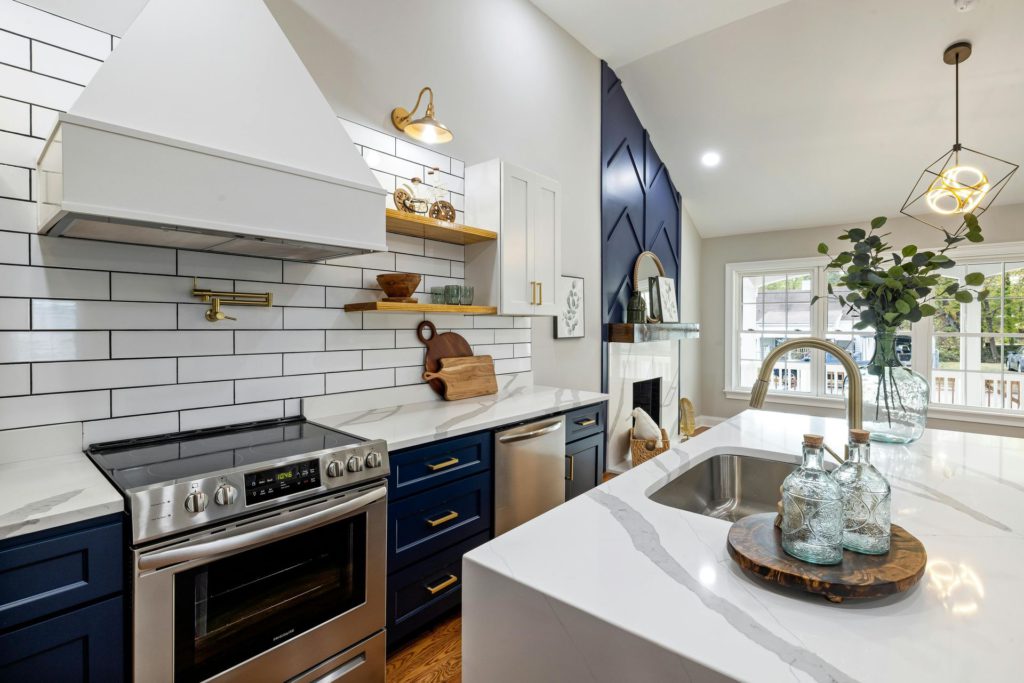
Dark cabinets make bold statements that often become bold regrets within five years as trends shift toward lighter, more flexible options. Navy, forest green, and charcoal finishes shrink visual space while limiting future design flexibility when you want to change directions. These dramatic choices demand specific lighting and decor that may not suit evolving tastes.
Strategic color application to kitchen islands or lower cabinets only provides visual interest without overwhelming commitment to trending hues. This approach allows experimentation with bold colors while maintaining neutral flexibility elsewhere in the space. Accent pieces through hardware, lighting, or accessories offer easier updates when preferences inevitably evolve.
4. Overly Themed Designs
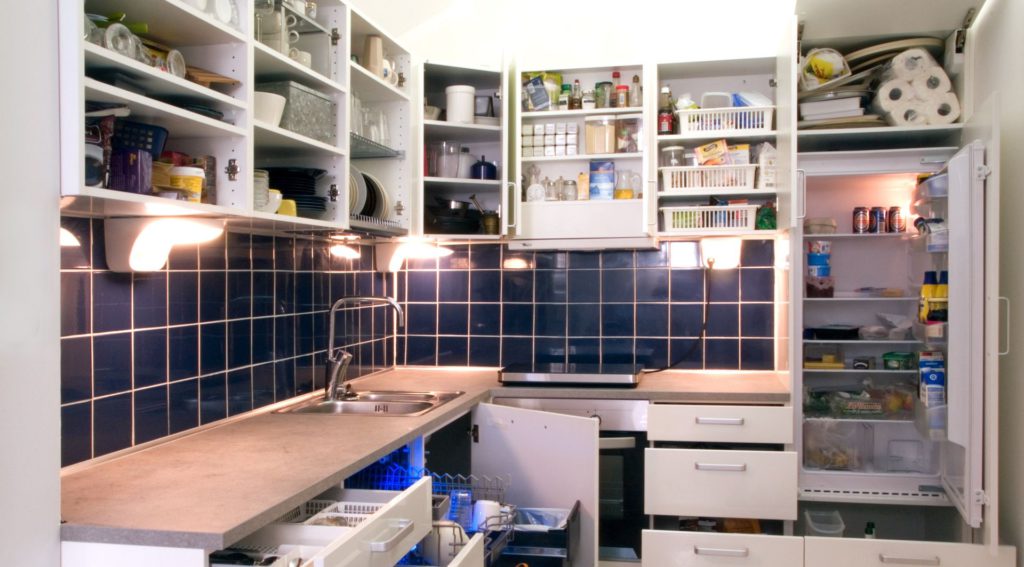
Beach-themed kitchens in landlocked suburbs feel as authentic as artificial Christmas trees in July heat waves. Excessive farmhouse elements, Tuscan vineyard motifs, or coastal decorations transform functional spaces into themed restaurants that lack sophistication. These literal interpretations of design concepts rarely age gracefully or suit diverse entertaining styles that real families need.
Subtle nods to preferred aesthetics work better than full-themed immersion that overwhelms the space with obvious decorative accessories. Coastal vibes emerge through sandy color palettes and natural textures rather than anchor collections and rope details. Sophisticated spaces incorporate theme elements through carefully chosen materials and colors instead of hitting visitors over the head with obvious references.
3. Fluted Wood Paneling Everywhere
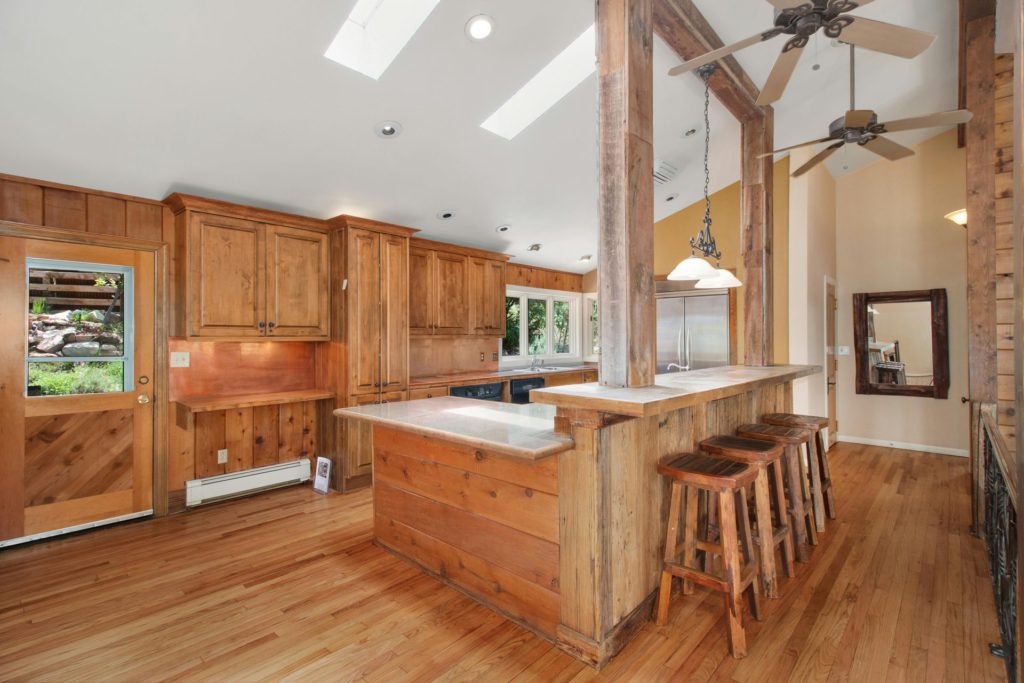
Vertical fluted panels saturated social media feeds faster than sourdough starter recipes during lockdown, creating instant oversaturation. These grooved surfaces collect cooking grease, pet hair, and dust in every channel while requiring specialized cleaning tools and constant maintenance. The ubiquity killed the sophisticated appeal within months of widespread adoption across every design account.
Incorporate fluted details through furniture pieces rather than permanent architectural elements that you’ll tire of quickly. Fluted sideboards or island bases add texture without overwhelming entire walls with maintenance-heavy surfaces. This approach provides trending aesthetics with future flexibility when design preferences inevitably shift toward the next big thing.
2. Over-Complicated Smart Appliances
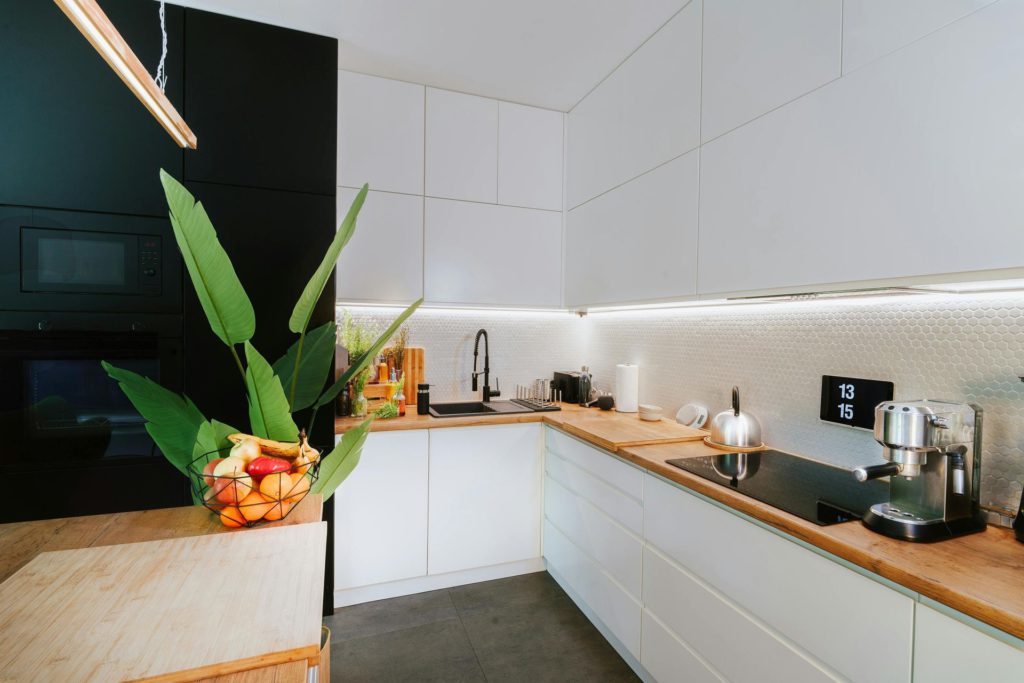
Wi-Fi enabled refrigerators with touchscreen displays cost thousands more than standard models while offering features that smartphones handle better anyway. These connected appliances often suffer connectivity issues, software glitches, and rapid obsolescence as technology advances faster than appliance replacement cycles. Touch-activated faucets malfunction more often than traditional handles while providing minimal convenience benefits that justify the premium price.
Motion-sensor lighting and soft-close cabinet hardware offer practical smart upgrades without technological complexity or connectivity headaches. These simple improvements enhance daily functionality while avoiding the maintenance nightmares of internet-connected appliances that break when your WiFi goes down. The best smart home features work invisibly rather than demanding constant attention and troubleshooting.
1. Two-Tiered Islands
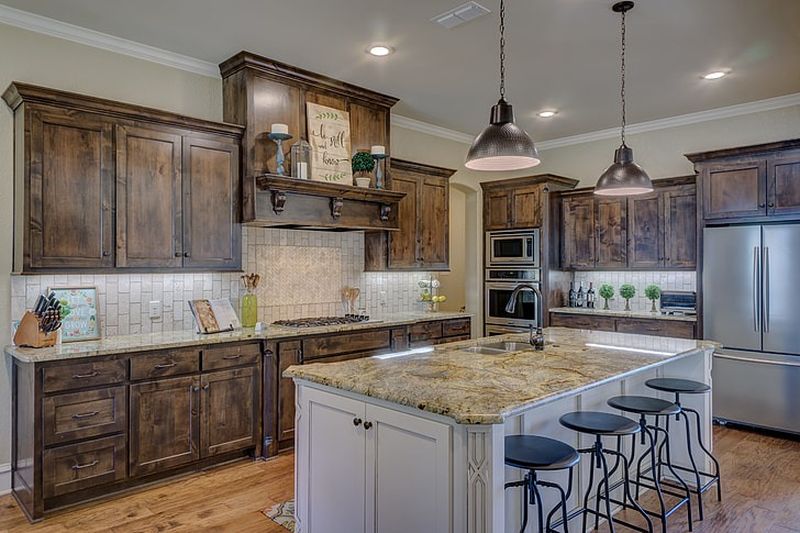
Multi-level islands with raised bar sections interrupt workflow while reducing usable counter space for actual food preparation tasks. These split-level designs create visual barriers that divide the kitchen into separate zones rather than promoting open interaction between cooking and socializing areas. The height variation complicates both food preparation and casual entertaining when you need continuous surfaces.
Single-level islands maximize continuous work surfaces while maintaining clean sightlines throughout the space for better traffic flow. Uniform counter height accommodates various tasks without awkward reaching or bending that makes cooking less efficient. This streamlined approach creates more functional workspace while supporting better interaction between kitchen users and guests.
Last modified: August 4, 2025







